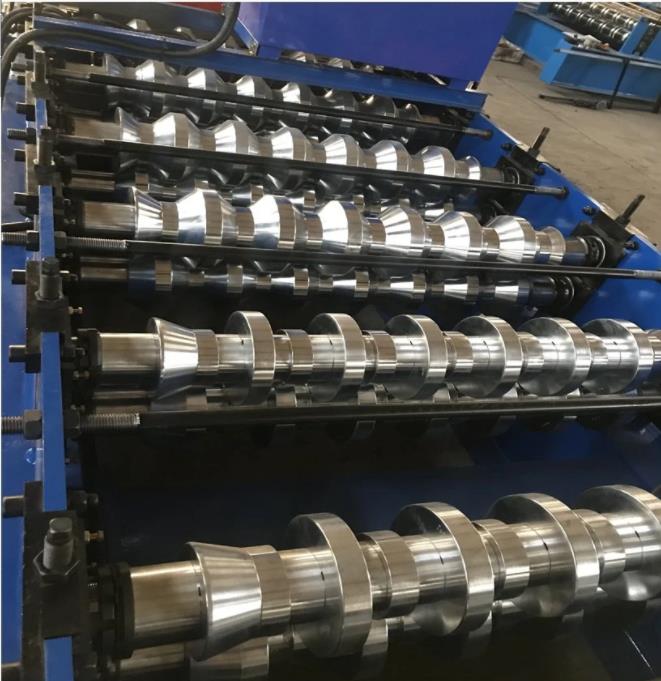High-Quality Equipment for Corrugated Steel Panel Production and Custom Roll Forming Solutions
The Versatile World of Corrugated Steel Roll Forming Machines
In modern construction and manufacturing, the demand for durable and lightweight materials has led to the increased use of corrugated steel. Corrugated steel sheets are renowned for their strength and resilience, making them a popular choice for roofing, siding, and other structural applications. At the heart of producing these materials lies the corrugated steel roll forming machine, a revolutionary piece of equipment that transforms flat steel sheets into strong and functional corrugated panels.
What is a Corrugated Steel Roll Forming Machine?
A corrugated steel roll forming machine is a sophisticated piece of machinery designed to produce corrugated sheets efficiently. The process begins with feeding flat steel strips or coils into the machine, which then shapes them through a series of rollers. Each set of rollers progressively bends the metal, imparting the characteristic corrugated profile that offers increased strength while maintaining a lightweight structure.
The machine can be customized to produce various wave patterns and thicknesses, catering to the specific needs of different applications, from agricultural buildings to industrial warehouses. This flexibility makes the corrugated steel roll forming machine an essential asset for manufacturers in various industries.
Efficiency and Economies of Scale
One of the standout benefits of corrugated steel roll forming machines is their efficiency. These machines can produce long runs of corrugated sheets with minimal manual intervention, drastically reducing labor costs compared to traditional fabrication methods. The automated nature of the machines also ensures a uniform quality in the output, enhancing consistency across the product line.
Moreover, the ability to produce custom designs on-demand allows manufacturers to meet client specifications without incurring significant overhead costs. This is particularly beneficial for businesses looking to scale up production as they can adjust the machine settings quickly to accommodate varying designs and sizes.
corrugated steel roll forming machine

Durability and Eco-Friendliness
Corrugated steel is known for its remarkable durability attributes. The combination of its structural integrity and corrosion-resistant coatings makes it ideal for various weather conditions and environments. This durability extends the lifespan of the structures built from corrugated sheets, ultimately reducing maintenance and replacement costs.
Additionally, corrugated steel is an eco-friendly choice. Steel is one of the most recycled materials globally, and using it in construction reduces the overall carbon footprint. Corrugated steel roll forming machines can work with recycled steel, further promoting sustainability in construction.
Applications Across Industries
The applications for corrugated steel sheets are diverse. In the agricultural sector, these sheets are used for constructing barns and storage facilities. In the construction industry, they serve as roofing and siding materials due to their ability to resist harsh weather conditions. Manufacturing plants use corrugated sheets for various structural applications, including walls and ceilings, where insulation and soundproofing are essential.
Furthermore, the aesthetic appeal of corrugated steel has not gone unnoticed. It is increasingly being utilized in modern architectural designs, both for functional and decorative purposes. From residential homes to commercial buildings, the versatility of corrugated steel continues to inspire innovative design solutions.
Conclusion
In summary, the corrugated steel roll forming machine is a game-changer in the production of corrugated steel sheets. Its ability to produce high-quality, durable products efficiently makes it invaluable across various industries. As the world continues to prioritize sustainable building practices and innovative solutions, the role of these machines will undoubtedly grow, shaping the future of construction and manufacturing. Embracing the technology of corrugated steel roll forming machines means investing in efficiency, durability, and versatility—key attributes that will define the structures of tomorrow.
-
Roof Panel Machines: Buying Guide, Types, and PricingNewsJul.04, 2025
-
Purlin Machines: Types, Features, and Pricing GuideNewsJul.04, 2025
-
Metal Embossing Machines: Types, Applications, and Buying GuideNewsJul.04, 2025
-
Gutter Machines: Features, Types, and Cost BreakdownNewsJul.04, 2025
-
Cut to Length Line: Overview, Equipment, and Buying GuideNewsJul.04, 2025
-
Auto Stacker: Features, Applications, and Cost BreakdownNewsJul.04, 2025
-
Top Drywall Profile Machine Models for SaleNewsJun.05, 2025








